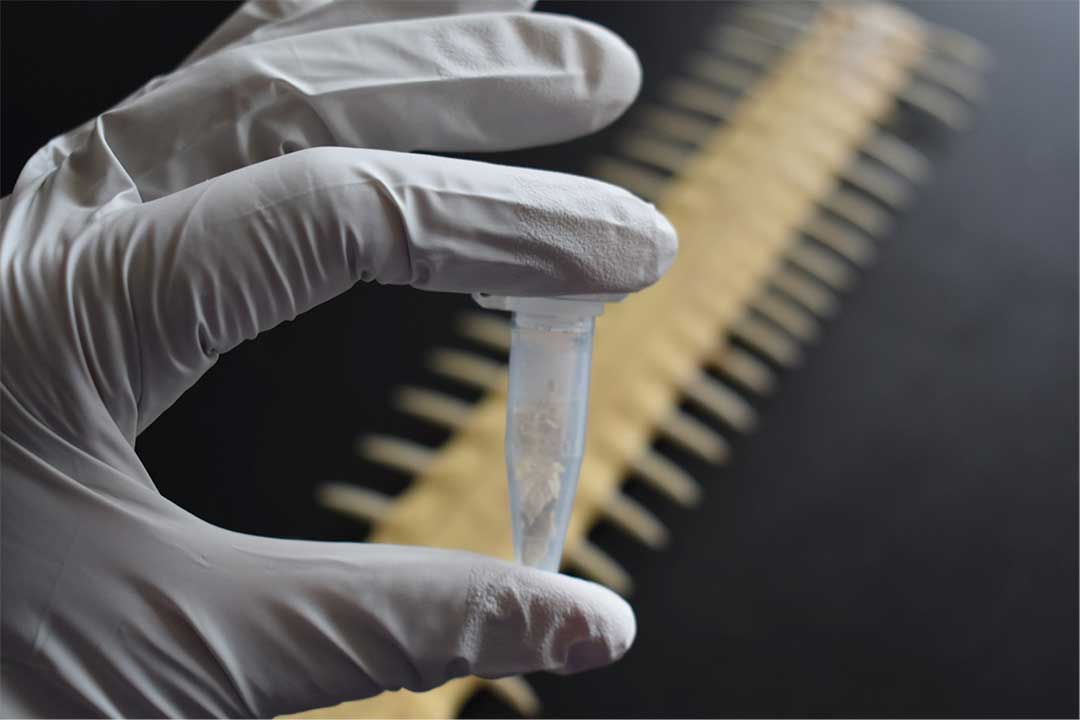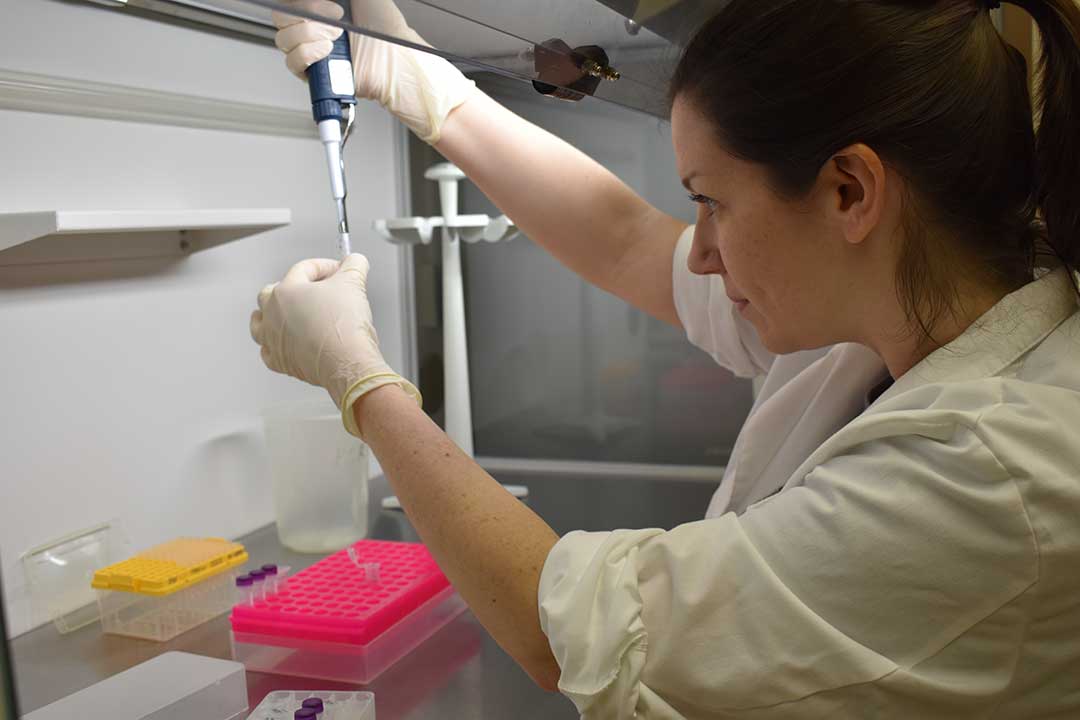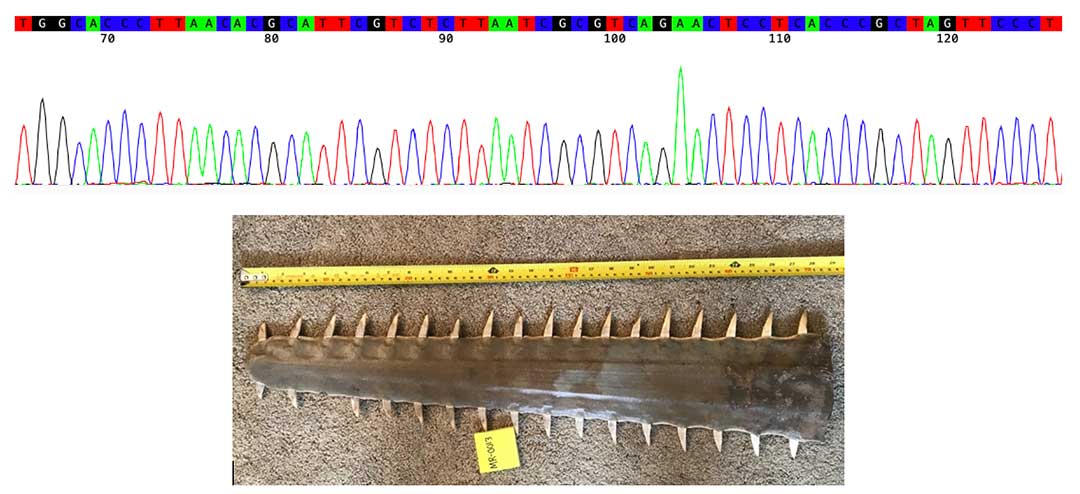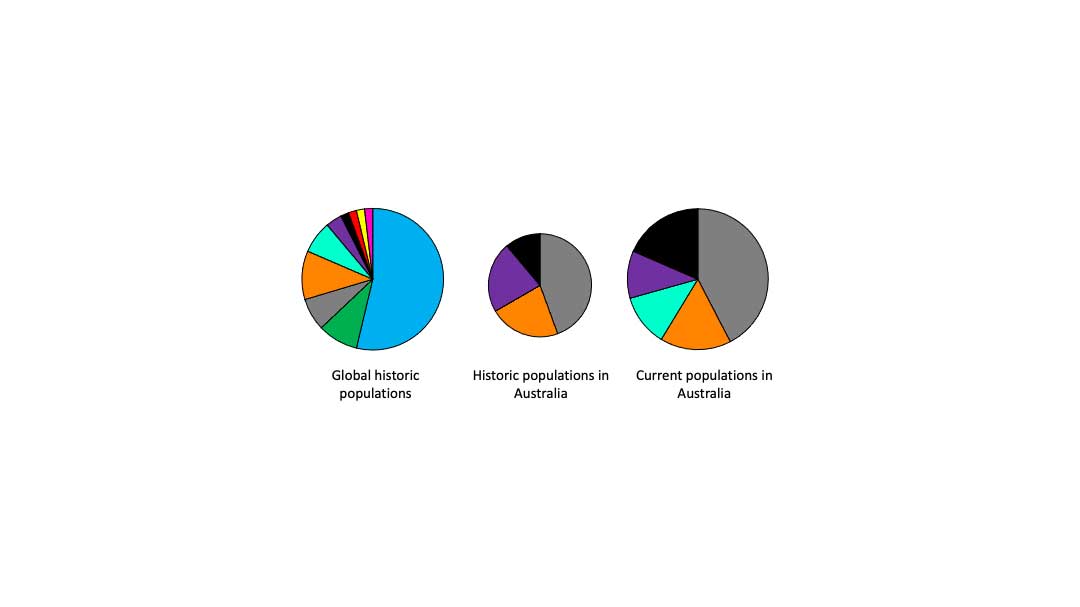Range contraction in largetooth sawfish linked to declines in global genetic diversity
Over the past several years, we have travelled to three continents, collaborated with over two dozen sawfish researchers, and visited over 150 natural history collections searching for sawfish saws. Through this global ‘SawSearch’, we have collected over 1,500 tissue samples from all five species of sawfishes. The origins of these saws span the globe, from locations such as West Africa, Nicaragua, Panama, Bangladesh, Papua New Guinea, and Australia, among others.

A tissue sample collected from a historic sawfish saw. Photo © Annmarie Fearing.
For the past two years, we have focused on analyzing the tissue samples collected from Largetooth and Green sawfishes. We were able to collect large numbers of samples for each of these species, which is necessary when assessing levels of genetic diversity. Genetic analysis of these samples includes extracting DNA from the tissues, and then PCR-amplifying and sequencing the gene of interest. For us, this is the mitochondrial DNA (mtDNA) control region, which tends to be more variable than other mtDNA genes in sharks and rays.

Nicole Phillips conducting a PCR experiment. Photo © Annmarie Fearing.

DNA sequence (above) obtained from a Largetooth Sawfish saw from Lake Nicaragua (below). Image © Annmarie Fearing
We are still finishing up the DNA sequencing, but we wanted to share some preliminary data we have generated for Largetooth Sawfish. Largetooth Sawfish historically had a circumtropical range. Across this historic range, so far we have found ten haplotypes, or unique genetic sequences, from 54 individuals. Five of these ten haplotypes can be found in the remaining Largetooth Sawfish populations in Australia. The other five haplotypes were found only in historic populations and may have been lost during range contractions experienced by this species during the 1900s. It is possible, however, that some of these unique genetic haplotypes persist in regions where Largetooth Sawfish have been reported, but their population status is unknown.

Largetooth Sawfish haplotypes found in historic populations (globally and in Australia) compared to those found in populations in Australia today. Each unique haplotype is represented by a different colour and sample sizes are reflected by the relative size of each pie graph. Figure © Nicole Phillips
Within Australia, historic populations of Largetooth Sawfish contained four of the five haplotypes observed in populations today (data from Feutry et al. 2015). While promising, this finding is based on a small sample size for historic Largetooth Sawfish populations in Australia from the 1970s. Additional samples are being analyzed to see if this finding is supported when using much older samples, some dating back as far as the late 1800s.
